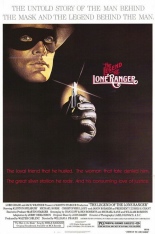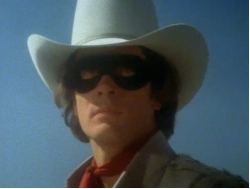
 There are some cinematic disasters that live on despite their failure, achieving a dubious kind of legend that actually serves them better than if they had succeeded. The Legend of the Lone Ranger is not one of them. In fact, it’s a film few people remember and even fewer ever talk about. When it flopped, it skipped right past infamy and went directly to oblivion instead.
There are some cinematic disasters that live on despite their failure, achieving a dubious kind of legend that actually serves them better than if they had succeeded. The Legend of the Lone Ranger is not one of them. In fact, it’s a film few people remember and even fewer ever talk about. When it flopped, it skipped right past infamy and went directly to oblivion instead.
The only reason I’ve remembered it over the years is because of a sweet childhood memory involving my parents waking me up to watch the Betamax copy they’d rented while coming home from a night on the town. I’ve come to assume that they were probably slightly tipsy when they did this, since they never did anything like that ever again, but I still find the recollection of it moving nonetheless.
 Returning to the movie three decades later, I feared the worst, especially knowing its star discovery — the improbably named Klinton Spilsbury — was a male model who never acted again after having all of his dialogue replaced by James Keach (who occasionally sounds recorded in an echo chamber), so I was pleasantly surprised by how entertaining the experience of watching it turned out to be.
Returning to the movie three decades later, I feared the worst, especially knowing its star discovery — the improbably named Klinton Spilsbury — was a male model who never acted again after having all of his dialogue replaced by James Keach (who occasionally sounds recorded in an echo chamber), so I was pleasantly surprised by how entertaining the experience of watching it turned out to be.
That’s not to say it’s a good movie, but rather that I found much amusement in its inelegant attempt to marry the charming innocence of the classic Lone Ranger iconography with the graphic brutality of the post-Peckenpah/Leone Western landscape. Imagine The Apple Dumpling Gang with gaping bloody bullet wounds and you can almost picture it. Does The Legend of the Lone Ranger deserve its obscurity? Probably, but that won’t stop me from returning to it again. —Allan Mott
